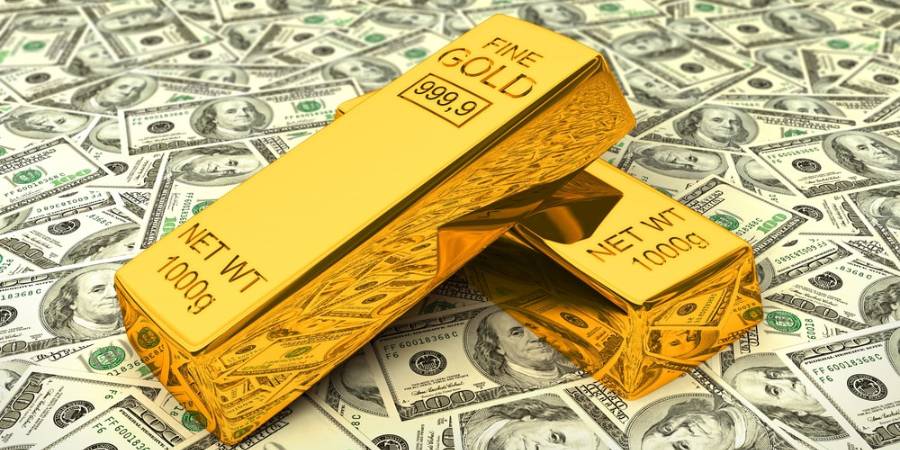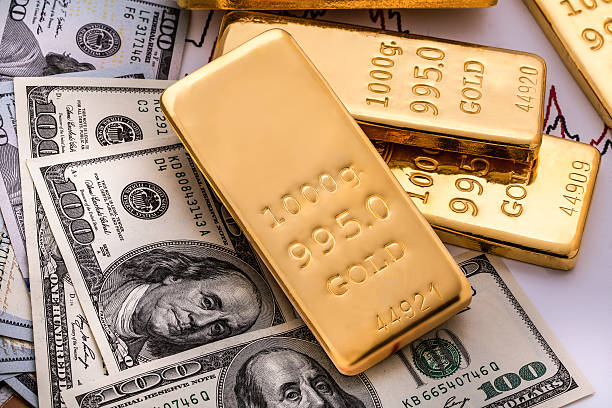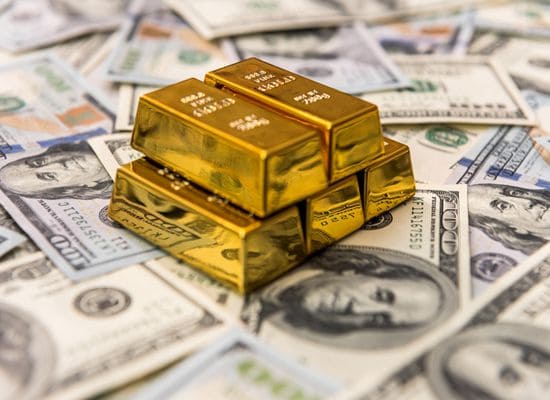Gold price bulls remain on the sidelines amid reduced bets for a larger Fed rate cut

- Gold price drifted lower following the release of the crucial US CPI report on Wednesday.
- Diminishing odds for a 50-bps rate cut in September lifts the US bond yields and the USD.
- The prospects for an imminent start of the Fed’s policy-easing cycle offer some support.
Gold price (XAU/USD) witnessed an intraday pullback from the vicinity of the all-time peak on Wednesday after the latest US consumer inflation figures dashed hopes for a larger interest rate cut by the Federal Reserve (Fed) in September. Apart from this, the risk-on impulse further undermined the safe-haven precious metal, which settled in the red for the first time in three days. That said, the prospects for an imminent start of the Fed's policy-easing cycle assisted the non-yielding yellow metal to find some support and bounce off the $2,500 psychological mark.
Furthermore, investors expect the US central bank to lower interest rates by 25 basis points (bps) at each of the three remaining policy meetings in 2024. This, in turn, acts as a tailwind for the Gold price during the Asian session on Thursday. The upside, however, remains capped amid the emergence of some US Dollar (USD) buying, bolstered by a pickup in the US Treasury bond yields. Moreover, the XAU/USD remains confined in a multi-week-old trading range, warranting some caution for aggressive traders and positioning for a firm near-term direction.
Daily Digest Market Movers: Gold price struggles to gain traction as traders trim bets for aggressive Fed policy easing
- Gold price fell on Wednesday after the crucial US Consumer Price Index (CPI) report forced investors to scale back their expectations of a larger, 50-basis-points interest rate cut by the Federal Reserve next week.
- The US Bureau of Labor Statistics reported that the headline CPI rose 0.2% in August and the yearly rate decelerated more than anticipated, from 2.9% to 2.5%, marking the smallest increase since February 2021.
- Meanwhile, the core CPI, which excludes volatile food and energy prices, was up 0.3% during the reported month and rose 3.2% in the 12 months through August, matching July's increase and market expectations.
- According to the CME Group's FedWatch tool, the markets are currently pricing in an 87% chance of a 25 bps rate cut at the next FOMC policy meeting on September 17-18 as compared to 71% before the US CPI data.
- Diminishing odds for a more aggressive policy easing by the US central bank push the US Treasury bond yields and the US Dollar higher, which, in turn, is likely to act as a headwind for the non-yielding yellow metal.
- Traders now look forward to the release of the US Producer Price Index (PPI) for some impetus, though the market reaction is likely to be limited amid the prospects for an imminent start of the Fed's rate-cutting cycle.
Technical Outlook: Gold price extends its consolidative price move and remains confined in a multi-week-old range
From a technical perspective, the recent range-bound price action constitutes the formation of a rectangle on short-term charts and might still be categorized as a bullish consolidation phase against the backdrop of a rally from the June swing low. Adding to this, mixed oscillators on the daily chart make it prudent to wait for a breakout through the short-term range before placing fresh directional bets. Meanwhile, any subsequent move up might continue to confront some resistance near the $2,530-2,532 region, or the all-time peak touched in August. Some follow-through buying will be seen as a fresh trigger for bullish traders and pave the way for the resumption of the prior well-established uptrend.
On the flip side, weakness below the $2,500 mark is likely to find support near the $2,485 region ahead of the $2,470 horizontal zone. The latter coincides with the lower boundary of the aforementioned trading range and should act as a strong base for the Gold price. A convincing break below might prompt aggressive technical selling and drag the XAU/USD to the 50-day Simple Moving Average (SMA), currently pegged near the $2,453-2,452 region. The corrective decline could extend further towards testing sub-$2,400 levels, or the 100-day SMA support.
Gold FAQs
Why do people invest in Gold?
Gold has played a key role in human’s history as it has been widely used as a store of value and medium of exchange. Currently, apart from its shine and usage for jewelry, the precious metal is widely seen as a safe-haven asset, meaning that it is considered a good investment during turbulent times. Gold is also widely seen as a hedge against inflation and against depreciating currencies as it doesn’t rely on any specific issuer or government.
Who buys the most Gold?
Central banks are the biggest Gold holders. In their aim to support their currencies in turbulent times, central banks tend to diversify their reserves and buy Gold to improve the perceived strength of the economy and the currency. High Gold reserves can be a source of trust for a country’s solvency. Central banks added 1,136 tonnes of Gold worth around $70 billion to their reserves in 2022, according to data from the World Gold Council. This is the highest yearly purchase since records began. Central banks from emerging economies such as China, India and Turkey are quickly increasing their Gold reserves.
How is Gold correlated with other assets?
Gold has an inverse correlation with the US Dollar and US Treasuries, which are both major reserve and safe-haven assets. When the Dollar depreciates, Gold tends to rise, enabling investors and central banks to diversify their assets in turbulent times. Gold is also inversely correlated with risk assets. A rally in the stock market tends to weaken Gold price, while sell-offs in riskier markets tend to favor the precious metal.
What does the price of Gold depend on?
The price can move due to a wide range of factors. Geopolitical instability or fears of a deep recession can quickly make Gold price escalate due to its safe-haven status. As a yield-less asset, Gold tends to rise with lower interest rates, while higher cost of money usually weighs down on the yellow metal. Still, most moves depend on how the US Dollar (USD) behaves as the asset is priced in dollars (XAU/USD). A strong Dollar tends to keep the price of Gold controlled, whereas a weaker Dollar is likely to push Gold prices up.







